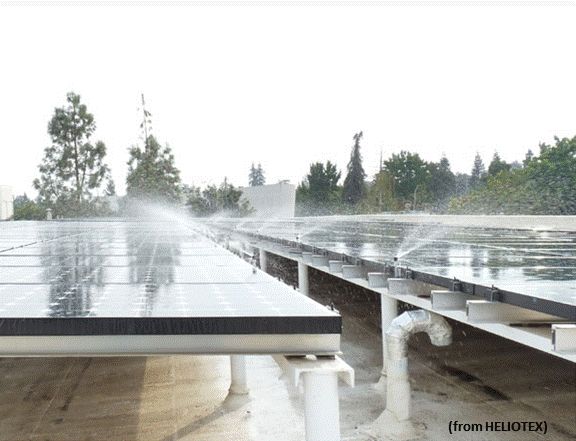On the heels of a strong third quarter, SunPower (SPWR) just announced the acquisition of Greenbotics for an undisclosed cash amount. Greenbotics is a small developer of solar panel cleaning automation for utility-scale applications.
It's a minor acquisition in terms of dollar magnitude and workforce size, but it's well known that cleaner panels improve power production, especially in the particulate-rich regions of the U.S. Southwest, the Middle East, and Chile, all of which are becoming increasingly popular as sites for solar installations.
Greenbotics claims that over the past two years, it has used its robots to wash "hundreds of megawatts" of U.S. solar systems. According to a release, "The robots can be configured for use with a variety of solar panels and mounting types, including fixed-tilt arrays and single-axis trackers, and offer a less costly and greener alternative to manual cleaning methods, pressure washers and sprayer trucks."
The company claims that cleaning PV panels in dusty regions can increase power harvest by up to 15 percent. The robots use less than half a cup of water to wash each panel, according to the company.
Greenbotics has worked with First Solar and MEMC in the past and was founded by Marc Grossman, former Lead Systems Engineer at eSolar.
Here's the Greenbotics robot in action:

Last month, we looked at the solar automation and cleaning sector. Here are a few key excerpts from that article.
The soiling rate [for solar panels] can be insignificant, but it can also be as significant as 1 percent per day, which could lead to an unacceptable 50 percent output degradation (with infrequent cleaning), according to Taft Instruments CTO Scott Potter. “In deserts, summer soiling rates can get up to 9 percent per month, and that is worth cleaning. But winter rates might only be 1 percent per month. Where there is little rain, cleaning is cost-effective. Where there is a lot [of rain], cleaning doesn’t make sense.”
“First Solar has found that different geographies, seasons, and weather favor different solutions,” Potter said. “In places where labor is cheap, manual or semi-manual cleaning is cost-effective. In places where water is restricted, First Solar uses brush cleaning. And in places where water is available, [the company has] worked with Greenbotics," said Potter.
The state of the art is trucks or hosing systems spraying off surfaces or laborers doing the work manually, explained Potter. “At California’s Solar Energy Generating Stations, the oldest U.S. solar plants, they spray 32,000 gallons of water every night onto the parabolic mirrors. And the level of degraded reflectivity is unacceptable in newer CSP projects.”
Heliotex and KNE install sprinkler-like systems that spray off panel surfaces. Heliotex nozzles are fixed at panel edges and connected to electrical and water supplies. Wash-rinse cycles are done at programmed intervals with minimal maintenance. First Solar and SunPower are among its users, the company's website reports. KNE tubing installs on frames adjacent to panels. KNE promises similar programmable, low-maintenance service.

Other semi-robotic brush-and-water systems include Israel’s SolarRobot, eSolar’s Automatic Heliostat Cleaning Robot, Spain’s Novatec Fresnel robots, and OCS Energy’s SolarWash.
Soiling and infrequent cleanings prevent projects from meeting PPA output guarantees, but “preventive cleaning keeps performance consistent,” Potter said. “Demand for cost-effective, preventative cleaning is going to grow."



